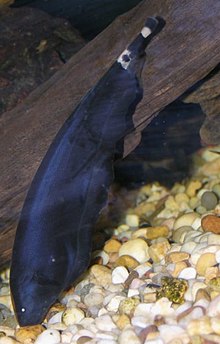भोलेनाथ का है आशीर्वाद, इस गांव में आने वाला नहीं रहेगा गरीब
अगर आप गरीबी और दरिद्रता से हमेशा के लिए पीछा छुड़ाना चाहते हैं, तो उत्तराखंड में स्थित देश के सीमांत गांव माणा में आना होगा। कहते हैं कि इस गांव को भगवान भोलेनाथ का आशीर्वाद मिला है कि जो भी यहां आएगा, उसकी गरीबी दूर हो जाएगी।
इस गांव के बारे में कहा जाता है कि यहीं गणेश जी ने व्यास ऋषि के कहने पर महाभारत की रचना की थी। यही नहीं, महाभारत युद्ध के समाप्त होने पर पांडव द्रोपदी सहित इसी गांव से होकर ही स्वर्ग को जाने वाली स्वर्गारोहिणी सीढ़ी तक गए थे। इसके आलावा इस गांव को श्रापमुक्त ज
गह का दर्जा भी प्राप्त है।
माना जाता है कि व्यक्ति के जीवन में जो भी कष्ट हैं वह पापों का फल होता है। मगर, इस गांव में आने से व्यक्ति सभी पापों से मुक्त हो जाता है। चमोली जिले में स्थित देश का सबसे अंतिम गांव माणा। यहीं पर माना दर्रा है, जिसके जरिये भारत और तिब्बत के बीच वर्षों से व्यापार होता रहा थाl
ऐसे मिला वरदान
पवित्र बदरीनाथ धाम से 3 किमी आगे भारत और तिब्बत सीमा स्थित इस यह गांव का नाम भगवान शिव के भक्त मणिभद्र देव के नाम पर पड़ा है। कहते हैं कि माणिकशाह नाम एक व्यापारी था, जो शिव का बहुत बड़ा भक्त था। एक बार व्यापारिक से पैसे कमाकर लौटने के दौरान लुटेरों ने उसका सिर काट दिया।
इसके बाद भी उसकी गर्दन शिव का जाप कर रही थी। उसकी श्रद्धा से प्रसन्न होकर शिव ने उसके गर्दन पर वराह का सिर लगा दिया। कहते है कि इसके बाद माना गांव में मणिभद्र की पूजा की जाने लगी।
उत्तराखंड संस्कृत अकादमी, हरिद्वार के उपाध्यक्ष पंडित नंद किशोर पुरोहित बताते हैं कि भोलेनाथ ने माणिक शाह को वरदान दिया कि माणा आने पर व्यक्ति की दरिद्रता दूर हो जाएगी। मणिभद्र भगवान से बृहस्पतिवार को धन की प्रार्थना करने से अगले बृहस्पतिवार तक धन मिल जाता है।
अगर आप गरीबी और दरिद्रता से हमेशा के लिए पीछा छुड़ाना चाहते हैं, तो उत्तराखंड में स्थित देश के सीमांत गांव माणा में आना होगा। कहते हैं कि इस गांव को भगवान भोलेनाथ का आशीर्वाद मिला है कि जो भी यहां आएगा, उसकी गरीबी दूर हो जाएगी।
इस गांव के बारे में कहा जाता है कि यहीं गणेश जी ने व्यास ऋषि के कहने पर महाभारत की रचना की थी। यही नहीं, महाभारत युद्ध के समाप्त होने पर पांडव द्रोपदी सहित इसी गांव से होकर ही स्वर्ग को जाने वाली स्वर्गारोहिणी सीढ़ी तक गए थे। इसके आलावा इस गांव को श्रापमुक्त ज
गह का दर्जा भी प्राप्त है।
माना जाता है कि व्यक्ति के जीवन में जो भी कष्ट हैं वह पापों का फल होता है। मगर, इस गांव में आने से व्यक्ति सभी पापों से मुक्त हो जाता है। चमोली जिले में स्थित देश का सबसे अंतिम गांव माणा। यहीं पर माना दर्रा है, जिसके जरिये भारत और तिब्बत के बीच वर्षों से व्यापार होता रहा थाl
ऐसे मिला वरदान
पवित्र बदरीनाथ धाम से 3 किमी आगे भारत और तिब्बत सीमा स्थित इस यह गांव का नाम भगवान शिव के भक्त मणिभद्र देव के नाम पर पड़ा है। कहते हैं कि माणिकशाह नाम एक व्यापारी था, जो शिव का बहुत बड़ा भक्त था। एक बार व्यापारिक से पैसे कमाकर लौटने के दौरान लुटेरों ने उसका सिर काट दिया।
इसके बाद भी उसकी गर्दन शिव का जाप कर रही थी। उसकी श्रद्धा से प्रसन्न होकर शिव ने उसके गर्दन पर वराह का सिर लगा दिया। कहते है कि इसके बाद माना गांव में मणिभद्र की पूजा की जाने लगी।
उत्तराखंड संस्कृत अकादमी, हरिद्वार के उपाध्यक्ष पंडित नंद किशोर पुरोहित बताते हैं कि भोलेनाथ ने माणिक शाह को वरदान दिया कि माणा आने पर व्यक्ति की दरिद्रता दूर हो जाएगी। मणिभद्र भगवान से बृहस्पतिवार को धन की प्रार्थना करने से अगले बृहस्पतिवार तक धन मिल जाता है।






